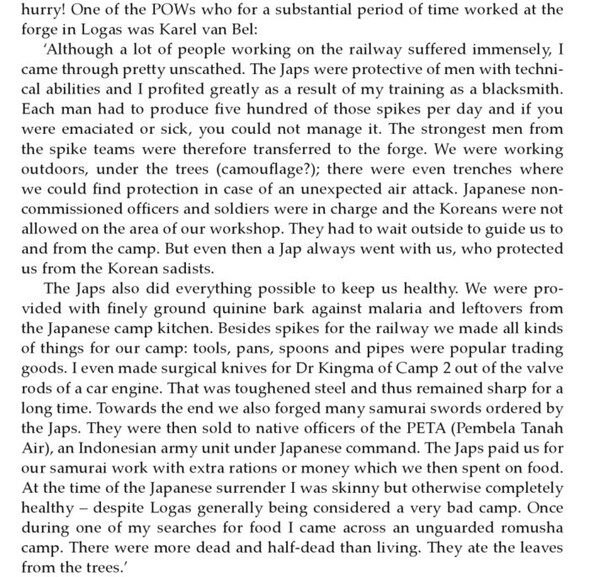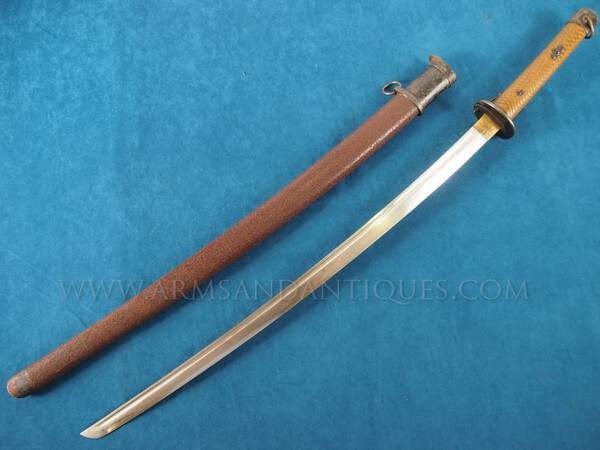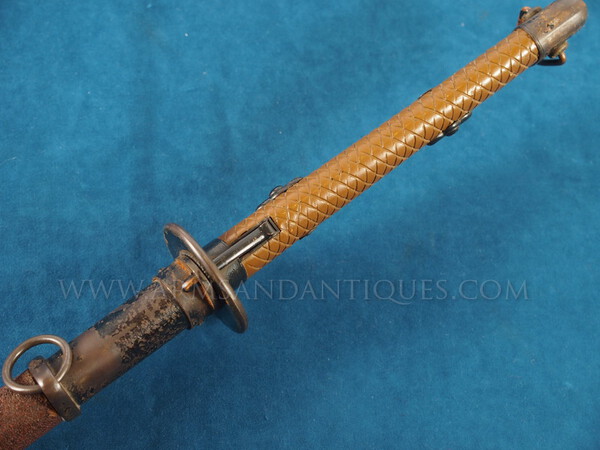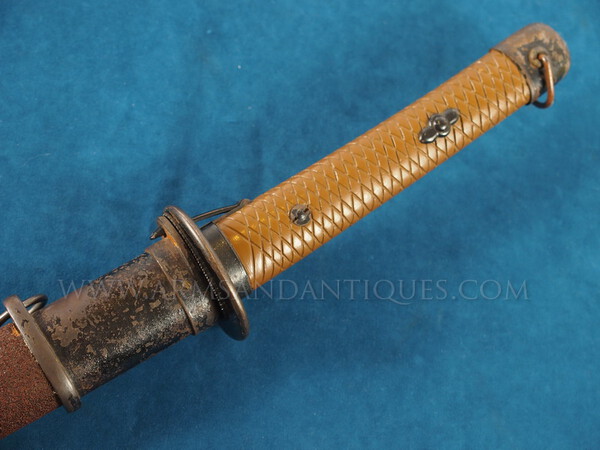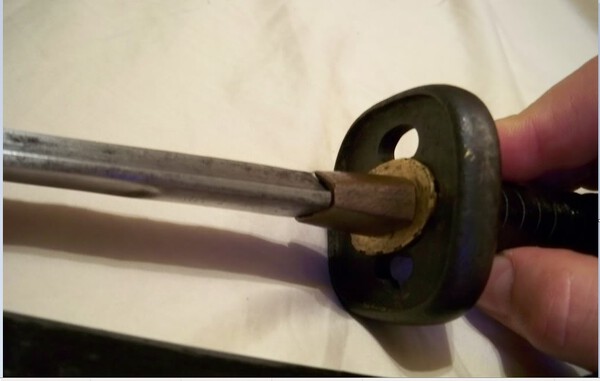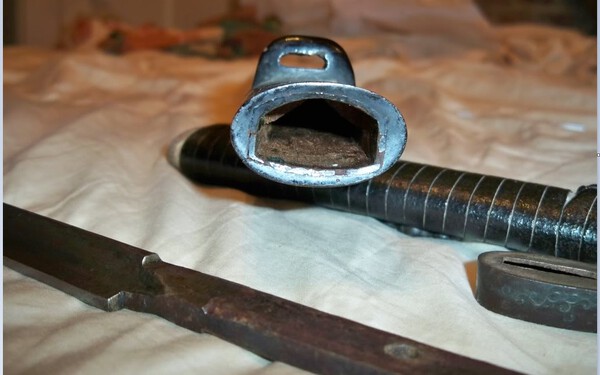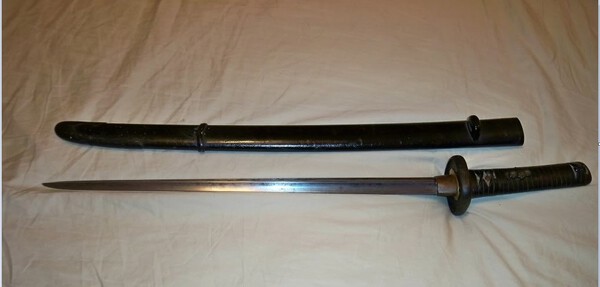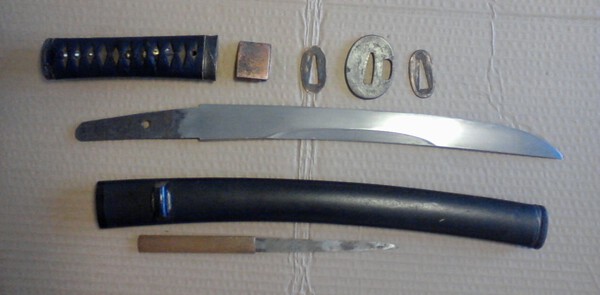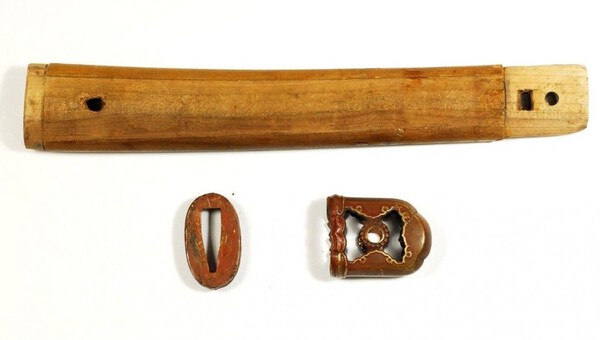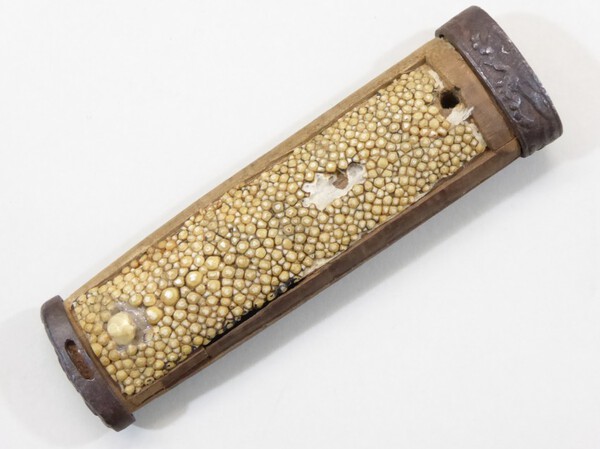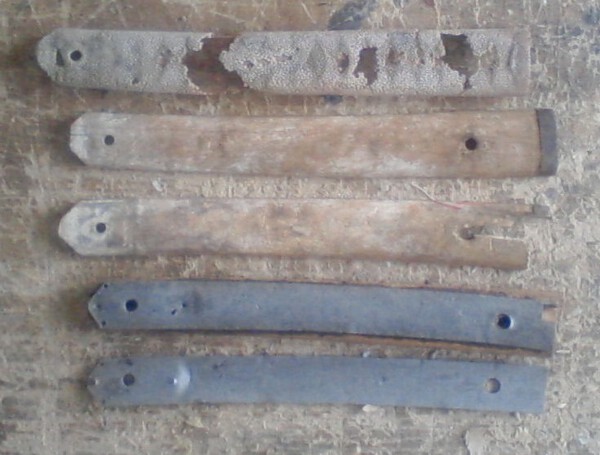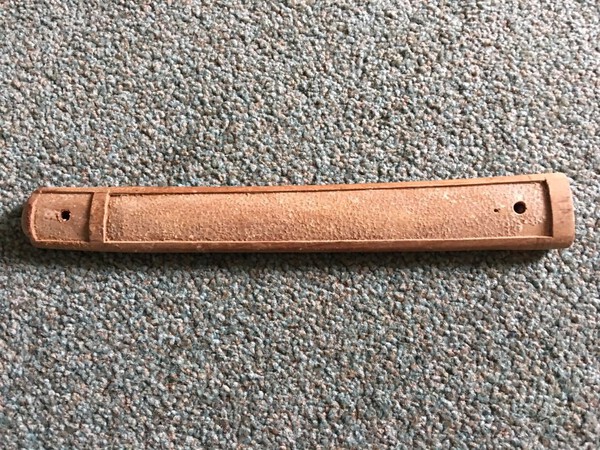-
Posts
1,690 -
Joined
-
Last visited
-
Days Won
11
Content Type
Profiles
Forums
Events
Store
Downloads
Gallery
Everything posted by Dave R
-
I think the loo paper comment is a clue here.
-
Regarding soldered on Habaki, I have personal experience of one that was glued on with what I think was an animal glue. The prize though goes to one I saw on a militaria forum, of a shin gunto with a cast on white metal Habaki.
-

Significance of Silver Plated Type 98's
Dave R replied to PNSSHOGUN's topic in Military Swords of Japan
There is an article by Chris Bowen about Amahide and his factory. My take away from it is that he pretty well specialised in custom order swords. No surprise to find that he produced them with silver plated mounts. -

The infamous NCO black saya strikes again
Dave R replied to zook's topic in Military Swords of Japan
It really is a very interesting sword, weird but interesting! I would love to know more about where it came from, and how/why it was mounted like that. -
-
To me it looks more like a Japanese made variant on the late war Rinji.
-

The infamous NCO black saya strikes again
Dave R replied to zook's topic in Military Swords of Japan
I did wonder about that one, thank you for the clarification. -

The infamous NCO black saya strikes again
Dave R replied to zook's topic in Military Swords of Japan
That might, just might, not be paint! Late war there were some odd substitutions, here's one with a "rubber" or some other synthetic tsuka. -

Fun Topic: The Unusual: Blades, etc.
Dave R replied to barnejp's topic in General Nihonto Related Discussion
I just remembered that I had this one in my files. No idea where I saw it, but it was fairly early in my rekindled interest in Nihonto.... -
Thank you, that is a nice sword!
-
Something seems to have happened to the first set of photo's.
-

Fun Topic: The Unusual: Blades, etc.
Dave R replied to barnejp's topic in General Nihonto Related Discussion
Does this counts as an unusual blade.... It is a known type, but one that I think is not seen that often. -
Nihonto became tourist souvenirs in 1877 with the final end to the Samurai system and the ban on wearing swords for all but Imperial forces and servants. The Toyokawa swords were not Nihonto, they had rust resistant ( not quite stainless steel) blades even.
-
I would suggest that the tang might be diagnostic. A Japanese artificer would be well aware of homeland tradition, particularly that the nakago would be seen on a regular basis during normal care and maintenance. To the rest of the World, the tang was something hidden by the hilt and of no importance.
-
To the best of my knowledge the second haikan was only for parade anyway, which is why it was made removable.
-

Suggestions on replacement of the Kashira or end cap
Dave R replied to anejohn's topic in General Nihonto Related Discussion
I think the first thing is to identify what it is exactly. It looks very like one of the "mystery swords." http://www.militaria.co.za/nmb/topic/22400-nlf-gunto-discussion/ -
You might find this interesting... http://www.nihontocraft.com/Yakinaoshi.html
-
Personal experience as a collector since I was eleven, and my brother never understood the hobby. I have owned some very nice items that gave me great joy while I had them, and economic support in difficult times when sold for cash when needed. I also got into the habit of saving money, and researching the market. The reading and hands on research has been near as much of a joy as the acquisition. My brother did not collect, was not interested in reading or any academic or intellectual pastime and had a busier social life and a successful one by all normal standards.Towards the end of his life, too ill for any of his usual recreations or activities, he found it very difficult. I think he would have found that later period of his life more enjoyable if he had something in the way of an actual hobby or interest.
-

What In The Cornbread Hell Is This?
Dave R replied to jt nesbitt's topic in Military Swords of Japan
This may or may not be relevant.... Helping out in the Royal Armouries Leeds (UK) I saw that every single Breast and Back from a 17C haul from France was marked inside with a varying number of "punch" marks in different arrangements, done to match fronts to backs. In this case the marks were made with the corner of a rectangular faced hammer. It's a quick and dirty way of marking to match! -
What I have done in the past, has been to buy an old stripped tsuka core of the right size, open it up and recut the interior to fit the new nakago. Then buy in the fittings of the right size. Not perfect I know, but you do end up with something that looks OK, Funnily enough, when I have opened some of these up, I have found evidence that I was not the first to do that with them, and that it was done quite some time in the past. I have also used original cores as a model or pattern when I have wanted something that I could not buy in good enough condition.... This is why I have a collection of original, but varied and sometimes poor condition tsuka. Shin Gunto are the easiest, but it works for others as well.
-
Plain iron or steel with an industrial finish, either oil quench or case hardened. The little punch chisel marks indicate that it was fitted to a blade at one point.
-

What In The Cornbread Hell Is This?
Dave R replied to jt nesbitt's topic in Military Swords of Japan
This is likely made for a Gunto. As for the punch marks, I have one with a dot punched nakago mune, but higher up, nearer the habaki. My guess is they are something done during manufacture as part of the production process and of no real significance.... Assembly marks or such like. I am open to suggestions though.



